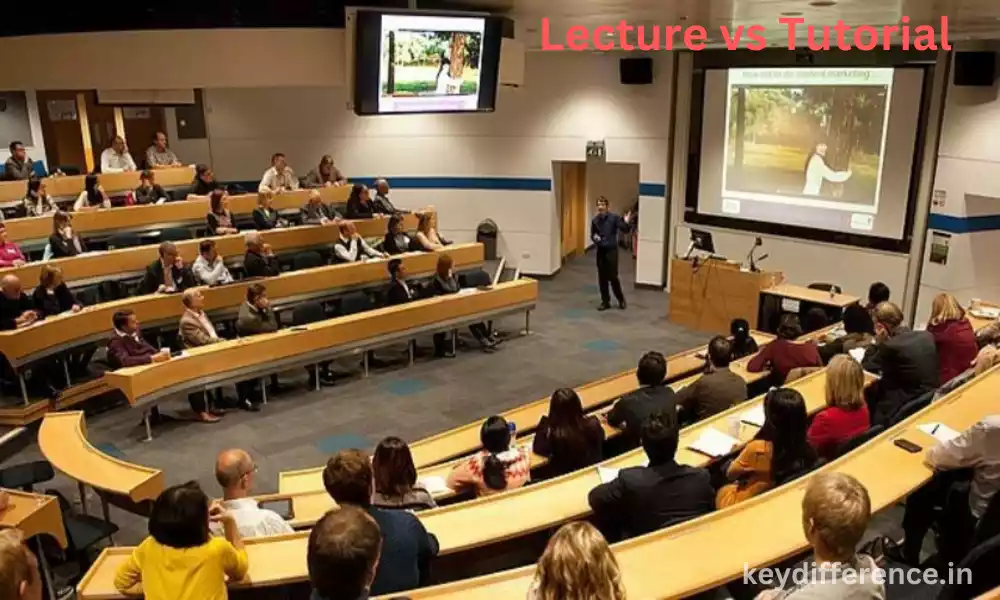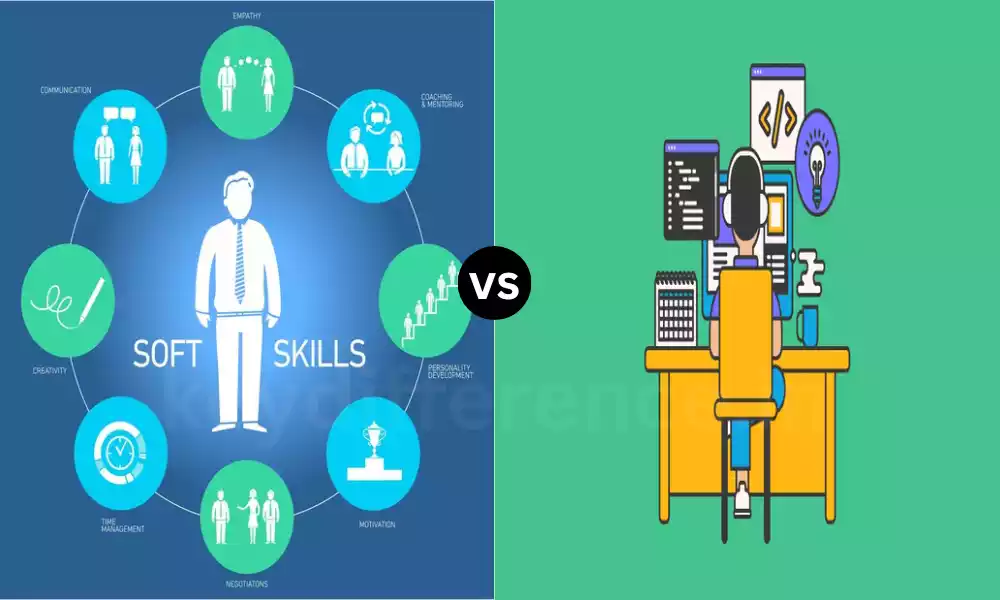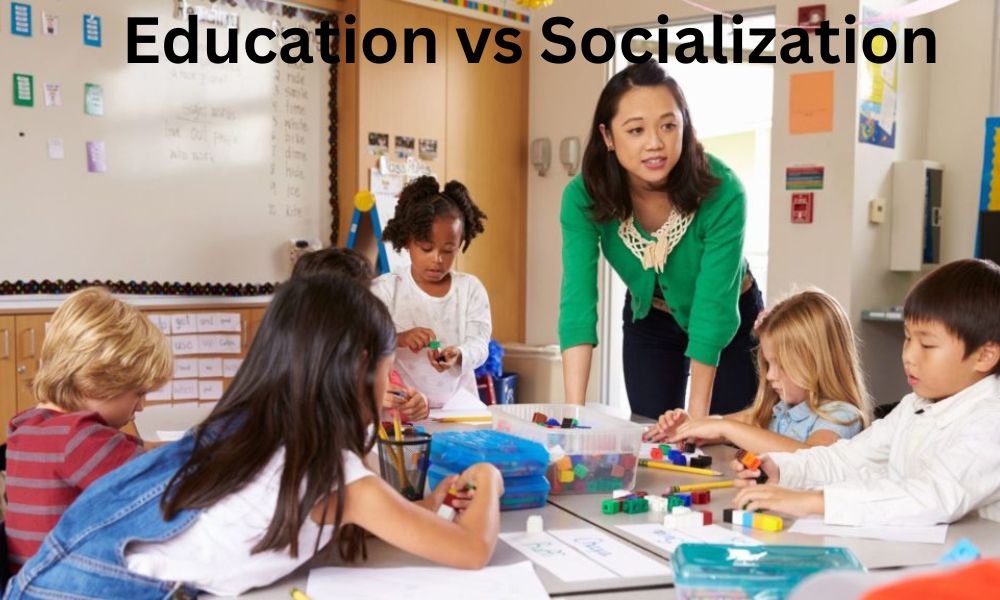Introduction of Lecture and Tutorial
Understanding the difference between lectures and Tutorials is vital for both students and Educators alike. Although these terms are commonly used within educational settings, their differences and purposes are often misunderstood.
A lecture and a tutorial represent two approaches to learning that each has its own set of features and benefits that students and educators alike should recognize and appreciate.
By understanding their distinctions more thoroughly, both students and educators can make the most out of their educational experiences while effectively using instructional formats to foster comprehensive education.
Come explore the realms of lectures and tutorials as we examine their roles, differences, and the valuable contributions each makes toward educational endeavors.
Definition of Lecture
Lectures are formal educational presentations or speeches given by instructors or experts to groups of students or audiences. Knowledge sharing is typically utilized within academic environments such as schools, colleges, and universities to convey knowledge, information, and concepts relevant to specific subjects or topics.
Lectures are presentations designed to offer an in-depth analysis and foundation for specific subjects. One-way communications usually include speaking, visual aids, and multimedia tools as the means of providing information to students.
Lectures can cover a broad spectrum of subjects, spanning science, humanities, social sciences, and Professional fields. Their primary objective is to disseminate knowledge and give students a strong grasp of the topic being discussed.
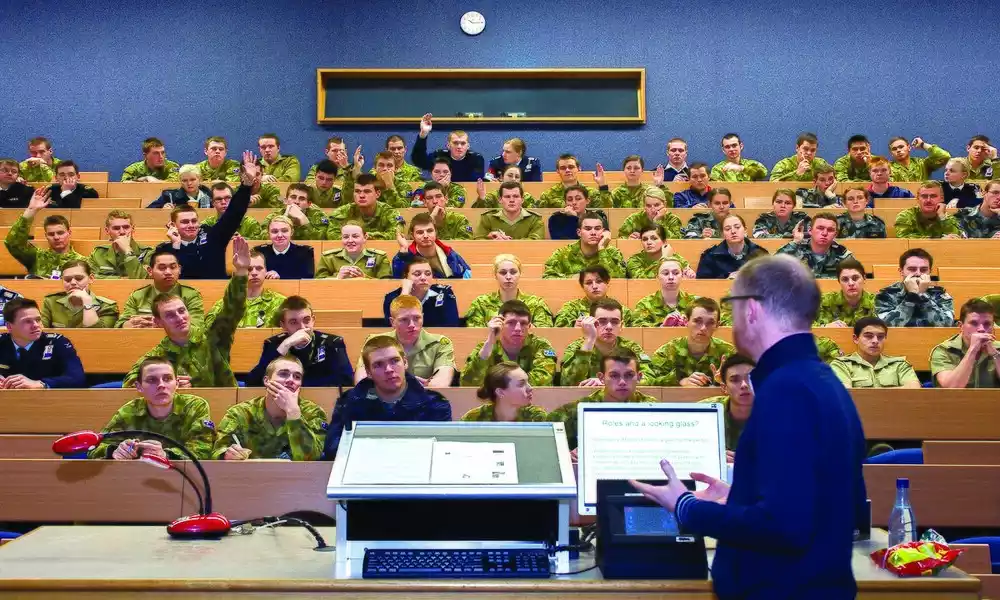
Definition of Tutorial
Tutorials are interactive learning sessions or instructional activities conducted in small group settings and designed to foster interaction and participatory learning among participants. A tutorial serves to assist with the understanding, application and practice of knowledge and skills taught through lectures or courses; typically led by an instructor or teaching assistant and providing an enabling environment where students can engage in discussions, problem solving activities and collaborative learning experiences.
Tutorials focus on active engagement and student-driven learning. Instead of simply receiving Information, students are Encouraged to actively engage in the process by asking questions, expressing opinions, Interacting with their classmates and instructor and participating in group discussions, case studies, practical exercises or other interactive activities that promote critical thinking and the application of concepts.
Tutorials serve to reinforce and deepen student understanding of material presented during lectures, address any confusion they might be experiencing, and offer personalized attention and feedback to every individual student. They can provide platforms where students can clarify their understanding, explore complex subjects in depth, and build problem-solving capabilities.
Tutorials provide an ideal complement to lectures by offering more engaging and participatory learning experiences, leading to deeper comprehension and application of knowledge, and aiding overall educational processes.
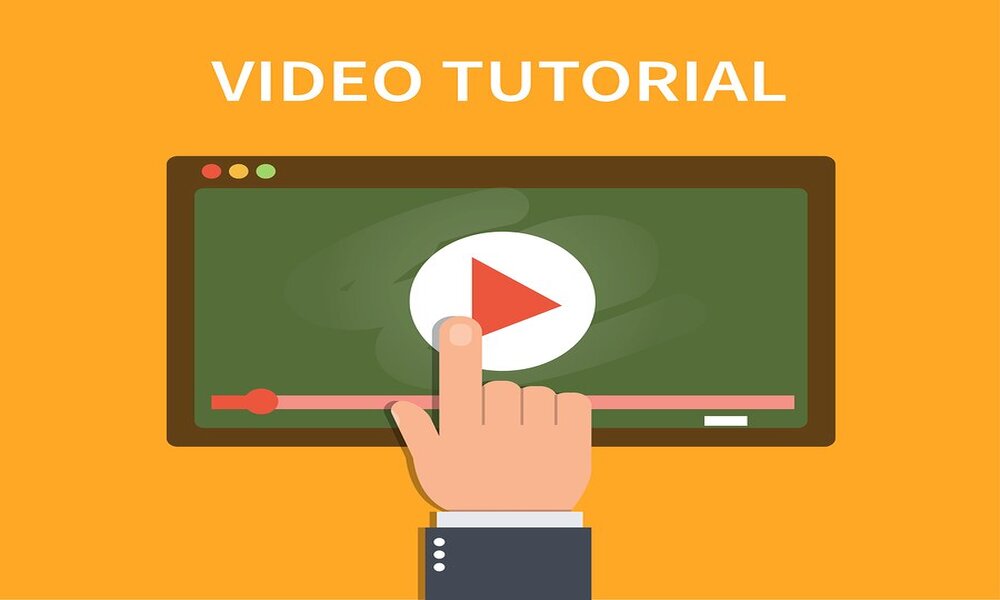
Comparison Table of Lecture and Tutorial
To further understand the differences between lectures and tutorials, the following table provides a concise comparison of their key characteristics:
| Aspect | Lecture | Tutorial |
|---|---|---|
| Communication | One-way communication from instructor to | Two-way communication involving discussions and |
| Style | students | interactions |
| Group Size | Typically involves a larger group of students | Involves a smaller group of students |
| Learning Focus | Emphasizes the delivery of knowledge and information | Focuses on understanding, application, and problem-solving |
| Teaching | Instructor-centered approach with limited | Student-centered approach with active |
| Approach | student participation | participation |
| Time Allocation | Usually scheduled for a longer duration | Typically shorter in duration, allowing for in-depth discussions |
By examining the above comparison, it becomes evident that lectures and tutorials differ in terms of communication style, group size, learning focus, teaching approach, and time allocation.
Lectures primarily involve one-way communication, larger student groups, and focus on imparting knowledge. On the other hand, tutorials emphasize interactive discussions, smaller groups, and application of knowledge through problem-solving activities.
Understanding these distinctions is crucial as both formats have their unique advantages and contributions to the learning process. By recognizing the strengths of lectures and tutorials, educators can employ them effectively to create a well-rounded educational experience for students.
Advantages of tutorials
Tutorials provide multiple advantages that complement and enrich the learning experience, including:
Active Engagement and Participation: Tutorials provide students with an avenue for active engagement and participation, giving them a chance to ask questions, voice their thoughts, and collaborate actively with their classmates in an attempt to enhance understanding and promote critical thinking skills.
This results in deeper knowledge acquisition as well as enhanced critical thinking capabilities.
Collaborative learning: Tutorials often feature group discussions and activities designed to foster cooperative learning environments among the students, encouraging them to share different perspectives, share ideas, and work collectively toward solving problems collectively.
Such an atmosphere fosters teamwork while helping develop effective communication and interpersonal skills among all members of their class.
Deeper understanding and application: Tutorials emphasize understanding and application rather than knowledge acquisition alone.
Through interactive discussions and practical exercises, students can dive deeper into subject matters by exploring real-life scenarios, applying theoretical concepts to practical situations, and building comprehensive understanding while honing problem-solving skills. This promotes greater comprehensiveness while aiding development.
Personalized Attention and Feedback: Due to smaller group sizes in tutorials, students have greater opportunities to receive personalized attention from an instructor or teaching assistant, enabling individualized feedback, clarification of doubts, and tailored guidance based on each student’s individual needs.
Through targeted feedback on progress made toward improvement goals as well as receiving advice for academic growth, they may receive more targeted guidance that may assist their development as academic learners.
Reinforcing lecture content: Tutorials offer students the chance to bolster and consolidate what they learn in lectures through reviewing lecture materials, discussing challenging ones with colleagues, seeking clarification when necessary and participating in interactive activities to further their comprehension of subject matters. They enable a stronger connection between theory and practice and improve overall understanding.
Tutorials provide a dynamic and engaging learning environment, encouraging active engagement, collaboration, deep understanding, personalized attention and reinforcing lecture content. By harnessing these advantages students can maximize their learning potential and form a comprehensive understanding of subject matter.
Encourages active engagement and participation
One of the greatest advantages of tutorials is their ability to promote active student participation.
Here are some points illustrating this point:
Enhance Learning Experience: Tutorials provide an ideal environment for students to actively engage with the subject matter rather than passively receive it. Students are encouraged to actively engage by asking questions, participating, submitting ideas and offering opinions – creating an immersive and interactive learning experience for everyone involved.
Increased Student Involvement: Tutorials foster a sense of ownership and responsibility for learning among their participants, engaging them actively in discussions, problem-solving activities, and other interactive tasks that promote deeper comprehension of material as students take an active role in building their knowledge base and forming connections to it.
Establishment of Critical Thinking Skills: By actively engaging in tutorials, students are given opportunities to think critically and analyze information. They gain exposure to multiple perspectives, evaluate evidence, and formulate well-reasoned arguments – skills essential for academic success and lifelong learning.
This promotes critical thinking abilities which ultimately contributes to academic success as well as lifelong learning.
Improved Communication Skills: Tutorials provide students with a platform to express their ideas, articulate opinions, and participate in fruitful dialogue with instructors and peers. This facilitates the development of effective communication skills such as active listening, articulating opinions clearly and respectful dialogue; such techniques will prove invaluable both academically and professionally.
Collaborative learning opportunities: Tutorials often incorporate group activities and discussions, providing an ideal setting for collaborative learning opportunities. Students work together, share knowledge and insights, and gain from one another’s expertise – this collaborative environment fosters teamwork, cooperation and the ability to effectively communicate and collaborate.
Increased Confidence and Engagement: Active participation in tutorials helps build students’ confidence when expressing their ideas or engaging with academic discourse.
Once more comfortable in the learning process, they are more likely to contribute actively and take ownership over their education – leading to increased overall engagement with learning experience and deeper investment in it.
Tutorials provide an exciting, engaging learning environment by encouraging active engagement and participation from their participants, encouraging critical thinking skills, communication abilities, collaboration efforts, and student confidence – qualities essential to academic success and preparedness for future challenges.
Provides opportunities for collaborative learning
Tutorials provide opportunities for collaborative learning. Here is more detail:
Tutorials provide an intimate setting that encourages sharing diverse perspectives amongst students from diverse backgrounds, experiences and knowledge levels, enriching the learning environment. Students can benefit from each other’s viewpoints by participating in collaborative discussions and activities that expand understanding while giving new insights into subject matters.
Participation and Engagement: Collaborative learning tutorials encourage active student participation and engagement by encouraging them to offer ideas, ask questions and interact with their classmates. Such participation results in deeper engagement with the material and helps foster greater understanding.
Constructing knowledge together: In collaborative learning, students actively construct their knowledge through interactions with their peers. They engage in discussions, problem-solving activities, and group projects where they explore, analyze and synthesize information together – this process of co-constructing knowledge improves learning outcomes and fosters deeper comprehension of subject matters.
Teamwork Skills Development: Collaborative learning in tutorials fosters teamwork skills that are crucial for many aspects of life. Students learn to work together effectively as a team by sharing responsibilities and cooperating as part of an ensemble, while honing essential communication, cooperation, negotiation and task delegation abilities that serve them both academically, professionally and personally.
Peer Support and Feedback: Collaborative learning offers students a supportive environment where they can receive constructive criticism and receive peer support in the form of peer feedback to refine their ideas, advance understanding, and maximize learning outcomes.
Preparation for Real-World Collaboration: Collaborative learning tutorials offer students a crucial preparation for real-world collaboration in professional settings where teamwork and cooperation are essential elements. Collaboration skills can be highly valued; through tutorial-based collaborative learning students develop these abilities needed for effective teamwork in future endeavors.
Tutorials provide opportunities for collaborative learning, creating an environment in which students can actively engage with one another, share different perspectives, construct knowledge together, develop teamwork skills and gain support from peers while also preparing themselves for real world collaboration.
This collaborative approach enhances learning experience while equipping them with key capabilities for academic and professional success.
Facilitates deeper understanding through discussions and activities
Tutorials have another distinct advantage in that they facilitate deeper comprehension by way of discussions and activities, leading to greater insight.
Here is more of an explanation:
Tutorials provide a platform for in-depth discussions, enabling students to delve deeper into a subject matter.
Guided discussions led by an instructor or facilitator provide students with an opportunity to examine different aspects, perspectives, and nuances of a topic while asking questions, sharing insights, and participating in critical analysis – leading them toward gaining an overall better understanding of it all.
Clarifying Complex Concepts: Tutorials provide students an opportunity to seek clarification of complex topics covered in lectures or readings, through active discussion and interaction between peers and instructors.
If any confusion or doubts exist, students can express their frustration directly while getting answers, examples, and resources to enhance understanding from both sources.
Having this type of assistance allows students to grasp challenging concepts more readily while overcoming any difficulties they might be experiencing.
Application of Knowledge: Tutorials offer students an opportunity to put their knowledge into action through activities, case studies or problem-solving exercises that enable them to apply it directly in real-world settings.
By engaging actively with subject material and exploring its practical ramifications they gain a deeper understanding of how theoretical concepts translate to concrete real-life contexts thereby creating an experience which makes the learning more meaningful and relevant.
Critical Thinking and Analysis: Tutorial discussions and activities encourage students to think critically and analyze information, both theoretical and real-world.
By offering different perspectives and challenging assumptions and engaging in debates or thought-provoking exercises, they develop their analytical abilities by learning to evaluate evidence, assess arguments and make informed judgments that contribute to a deeper and richer understanding of subjects covered by tutorials.
Active Learning and Engagement: Tutorials foster active learning by engaging students in hands-on activities, problem-solving tasks, or collaborative projects that encourage engagement with cognitive processes such as analysis, synthesis, and evaluation that contribute to deeper levels of understanding.
Through such activities, students actively construct knowledge, apply concepts, and develop higher-order thinking skills.
Integration of Knowledge: Tutorials provide students with a forum in which to explore, integrate and connect various concepts or ideas within a subject area.
By exploring relationships among different topics or drawing connections between various parts of their course, students gain a more holistic knowledge base that enhances comprehension while giving a larger view.
Tutorials facilitate discussions and activities that foster deeper understanding by encouraging in-depth discussions, clarifying complex concepts, applying knowledge gained from experience, encouraging critical thinking skills development, encouraging active learning engagement and integration of knowledge into your academic discipline.
Through such immersive learning experiences, tutors promote greater insight into their subject matters.
Allows for personalized attention and feedback
Tutorials offer another great advantage in that they allow for personalized attention and feedback.
Here’s more on this point:
Individualized Guidance: Tutorials give students an opportunity to receive customized guidance from instructors or teaching assistants in smaller group settings.
By dedicating more time per student and responding directly to their specific inquiries and learning needs, this ensures each one receives tailored support based on his or her unique progress and challenges.
Targeted Feedback: Tutorials allow instructors to provide targeted feedback to students on their performance, progress, and understanding of subject material.
Through discussions, activities, or assignments instructors can assess students’ grasp of concepts before providing constructive criticism to help them improve. Personalized feedback enables students to identify both their strengths and areas for growth for continuous development and growth.
Clarification of Doubts: Tutorials offer students an ideal environment in which to address any queries about course material that might cause any uncertainty or misconceptions. Students may seek clarification of challenging concepts, seek additional explanations or request more examples or resources; instructors can address all inquiries directly so as to ensure students gain a solid understanding of its contents without misconceptions or uncertainties arising.
Customized instruction: Tutorials enable instructors to cater their instruction to meet the unique learning styles and preferences of their students, adapting teaching methods, explanations and examples accordingly – creating a more tailored and effective experience for all.
This personalized approach makes each lesson relevant and relevant for every learner.
Individual Progress Monitoring: Instructors in tutorials have the opportunity to closely track each student’s development.
By monitoring participation levels, contributions made during discussions and performance in activities or assignments they are able to recognize any areas where students may be struggling or excelling allowing them to provide timely support or intervention as required.
Active Learning: Tutorials that feature personalized attention and feedback encourage active engagement from their students with subject material, so that they feel more at ease asking questions, expressing ideas, or seeking clarification knowing that they will receive individualized support and feedback from tutors.
This active learning approach boosts understanding, retention, and application of knowledge.
Tutorials provide an ideal learning environment by offering personalized attention and feedback, creating a supportive learning environment where students receive individual guidance, targeted feedback, clarification of any doubts that may exist, customized instruction, progress monitoring, encouragement for active learning and personalized progress monitoring.
This personalized approach fosters greater comprehension of subject material as well as academic growth and success for each individual student.
Complementary Relationship
Lectures and tutorials work hand in hand to provide education.
Here is an explanation of their relationship:
Lecture as Knowledge Dissemination: Lectures serve primarily as platforms for knowledge dissemination. Instructors use lectures to disseminate information, concepts, theories and key ideas to a larger group of students in lecture format. Lectures also offer an efficient means of introducing new topics, providing foundational knowledge or providing an overview of a subject matter.
Tutorial as Interactive Learning: Tutorials emphasize interactive and participatory learning, providing an opportunity for students to actively engage with material, ask questions, discuss concepts, and apply knowledge.
Furthermore, they allow for more intimate settings, usually smaller groups, where students can collaborate, analyze critically evaluate, deepen understanding through discussions, activities and problem-solving exercises.
Reinforcement and consolidation: Tutorials offer students a way to strengthen and consolidate the knowledge acquired in lectures.
By reviewing lecture content, seeking clarification for difficult topics, engaging in activities that apply their knowledge directly in real world scenarios and taking part in activities designed to help apply theory into practice, tutorials can serve to strengthen understanding between theory and practice.
Addressing Individual Needs: Lectures typically accommodate large groups, making it challenging for instructors to provide tailored attention and individualization of instruction to every student.
By contrast, tutorials allow for more targeted feedback and personalized assistance for every individual in the tutorials setting; instructors can identify any areas where students require extra assistance or clarification in real-time and offer tailored guidance accordingly.
Comprehensive learning experience: The combination of lectures and tutorials creates an in-depth educational experience for students.
Lectures offer structured introductions to subjects while tutorials enable active engagement through discussion, application, and personalized guidance – creating an optimum combination that allows for both conceptual knowledge development as well as practical application of the material studied.
Synergistic Learning Outcomes: The complementary relationship between lectures and tutorials leads to synergistic learning outcomes. Lectures provide a foundation of knowledge while tutorials foster deeper comprehension, critical thinking skills development, collaboration among classmates, and problem-solving capabilities.
Together, these approaches enhance overall learning outcomes while giving students a comprehensive grasp of the subject matter while equipping them for both academic success and real-world applications.
lectures and tutorials form a complementary relationship in which lectures provide foundational knowledge while introducing new topics; tutorials offer participatory learning experiences, reinforcement of concepts, personalized attention and application of knowledge – together creating a comprehensive learning environment to foster students’ overall development and comprehension of subject material.
Importance of lectures and tutorials working together
Lectures and tutorials working together are key for students’ overall educational experience, for multiple reasons.
Here are just a few key reasons:
Comprehensive Understanding: Lectures provide a broad introduction to a subject matter, outlining key concepts and theories. Tutorials then allow students to delve deeper into the material discussed, engage in discussion forums, and apply knowledge in practical contexts.
Together these elements ensure students gain a comprehensive understanding of both its theoretical knowledge as well as its application in everyday settings.
Active Engagement and Participation: Lectures and tutorials work hand in hand to foster active student participation and engagement. Lectures allow them to absorb information while tutorials enable them to actively interact with it through discussions, activities, and problem-solving exercises.
This collaborative approach promotes higher levels of engagement and critical thinking skills retention.
Clarification and Reinforcement: While lectures provide information, tutorials offer students a space in which they can seek clarity on complex concepts or challenging topics.
Students can pose questions, seek additional explanations, and receive tailored feedback – creating the opportunity for their understanding to strengthen, doubts to dissipate and knowledge to increase.
Together these lectures and tutorials ensure students receive all of the support needed to enhance their knowledge base and deepen their understanding.
Individualized Support and Feedback: Tutorials offer more tailored attention, allowing instructors to provide tailored support and feedback to students individually.
It may be difficult for a lecture format to meet all students’ individual needs; but through tutorials, instructors can monitor student progress closely, identify areas where they might be struggling, and offer targeted guidance that allows for customized guidance – helping overcome challenges, build confidence, and unlock their full potential.
Skill Development: Both lectures and tutorials work hand in hand to foster skill development in students.
Lectures provide the framework of knowledge while tutorials offer opportunities for critical thinking, collaboration, problem-solving, and communication abilities – ultimately giving each person an array of essential abilities for academic success as well as future professional endeavors.
Holistic learning experience: Lectures and tutorials offer students a holistic learning experience that incorporates information dissemination, active learning, collaboration and personalized support – providing a well-rounded education where theoretical knowledge is reinforced, applied, and contextualized.
Working together, lectures and tutorials create a synergistic learning environment that fosters comprehensive understanding, active engagement, clarification and reinforcement of concepts, individualized support and feedback, skill development, and holistic learning experiences for students.
By working in harmony, these components maximize educational value while supporting student growth and success.
Lectures provide the foundation, while tutorials reinforce and deepen understanding
Lectures and tutorials both play important roles in the learning process, with lectures providing the basis of knowledge while tutorials deepen understanding and reinforce it further. Here’s more information:
Lectures as Knowledge Foundation: Lectures are used as an effective platform for instructors to introduce fundamental concepts, theories, and information to their students. Lectures offer an organized and structured presentation of key ideas, principles, frameworks etc. within any subject area – providing foundational knowledge necessary for understanding further exploration.
Tutorials as an Opportunity for Reinforcement and Depth: Tutorials are a valuable adjunct to lectures by providing opportunities for students to reinforce and deepen their understanding of material covered. Students participate in discussions, activities, problem-solving exercises and problem-solving challenges during tutorials that allow them to apply the knowledge gained in lectures to practical situations.
Furthermore, tutorials create an environment conducive to active learning, critical thought, and collaborative exploration as they delve deeper into a subject matter.
Consolidation of Learning: Tutorials can play an essential role in consolidating knowledge acquired in lectures through discussions and activities, giving students the chance to revisit the content, clarify any uncertainties, and strengthen understanding.
They also allow for integration between concepts so students can make connections between various concepts more easily while applying their learning comprehensively.
Engaging and Participating: While lectures involve passive reception of information, tutorials provide students with an active engagement experience that encourages active questioning and participation from them as students are encouraged to share their perspectives, ask questions, ask for clarification from tutors and collaborate with their classmates.
Through such active involvement in learning processes, students are better able to process, analyze, discuss, and retain what they learn in an informal yet supportive learning environment.
Individualized Guidance and Feedback: Tutorials provide students with personalized guidance and feedback from instructors or facilitators, who can address specific student queries, provide targeted explanations, and offer feedback about performance and understanding of subject material.
Such personalized support allows for faster progress through challenges faced when learning a subject matter – and an enhanced experience overall!
Tutorials provide students with an opportunity to apply the knowledge gained in lectures to real world scenarios through activities and problem-solving exercises, leading them to develop critical thinking abilities, problem-solving abilities, and transfer theoretical knowledge into real life situations.
Furthermore, tutorials serve as a space where practical skills are developed through hands-on engagement to reinforce learning experiences.
lectures provide foundational knowledge and conceptual framework, while tutorials reinforce and deepen understanding through active engagement, application, consolidation, and personalized support. Together they form a holistic learning experience which boosts students’ comprehension, critical thinking abilities, and practical skill development.
Conclusion
Lectures and tutorials play complementary roles in the educational process, working hand in hand to provide an effective learning experience. Lectures provide the framework by imparting knowledge, introducing key concepts, and offering an overview of subject matter; tutorials serve as structured platforms for information dissemination that set the scene for further examination.

